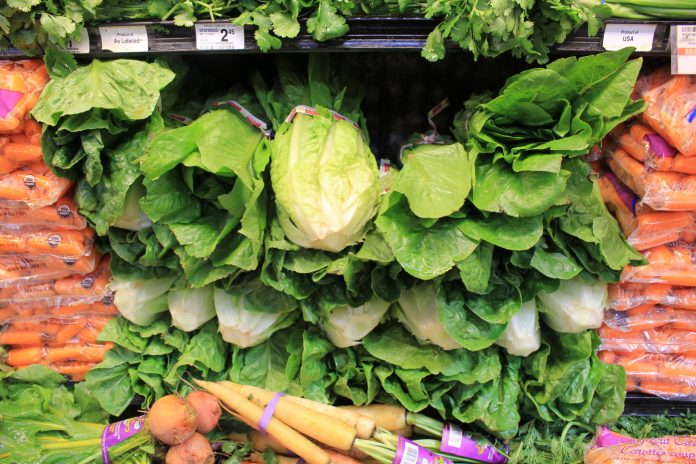Where was your romaine lettuce grown?
If it was grown in California—where most romaine and other lettuce varieties grow—it is safe to eat. If not, throw it out.
The Food and Drug Administration and the Centers for Disease Control and Prevention this week were sticking with their April 20 warning to consumers, telling them to throw away romaine lettuce, in any form, that comes from Arizona, and to avoid eating romaine of “unknown origin” because of E. coli outbreaks in 16 states, including California.
U.S. officials said this week they still haven’t pinpointed the source of the contamination, and may not know for months.
Romaine lettuce is a $33 million annual crop in San Benito County—and a nearly $500 million crop in neighboring Monterey County—so any warnings about lettuce safety send tremors across the region.
California-grown lettuce, produced and packaged under strict state guidelines, is 100 percent safe, according to county and state agricultural officials.
Much of the romaine sold in the winter is from Arizona, but a check of local grocery stores in Gilroy this week showed that California-grown romaine was already filling produce sections.
A Safeway Stores spokesperson said the chain has “changed our source of supply for chopped romaine lettuce and products containing it.” “All bagged salads and other items containing chopped romaine lettuce are currently being sourced from farms in growing regions not affected by the CDC warning,” said Safeway’s Wendy Gutshall. Initial warnings April 19 were only or chopped lettuce. When the broader warning was released the next day, Safeway added: “We are in the process of also identifying and removing products with full-leaf romaine sourced from the Yuma, Arizona region.”
She said customers also could bring Arizona or “unknown” romaine into the store for a refund.
CDC officials said the new outbreak is from a dangerous strain of E. coli that produces a toxin that can enter a person’s bloodstream and severely impact kidney function, in addition to the common E.coli symptoms of vomiting, painful cramps and diarrhea.
Typically, this contamination comes from animal feces coming into contact with the produce.
The first illnesses were reported in mid-March, with the most recent among jail inmates in Alaska. State officials traced the romaine to one lettuce supplier for the jail, which said it received its lettuce from a packer in California, which got its romaine from a farm in Yuma, Ariz.
No single farm has been identified as the location of the contamination nationwide, said federal officials.
“The leafy greens community takes the responsibility of producing safe leafy greens very seriously,” said Scott Horsfall, CEO of the California Leafy Green Marketing Association. “Not only are the foods we grow eaten by our own families, but they are consumed around the world. Our deepest sympathies go out to those people whose lives have been impacted by this outbreak.”
Nearly all of the romaine lettuce currently harvested and shipped throughout the U.S. is from California, which have not been identified by the government as being associated with this outbreak. It is year-round crop in much of California.
The production of “leafy greens” typically transitions from Arizona to California at this time of year. According to the Arizona Department of Agriculture, shipments of romaine lettuce from the Yuma, AZ growing region have ended.
“Because of the perishable nature of romaine lettuce, it is very unlikely that any romaine lettuce from Yuma, AZ that was purchased and consumed in mid-to-late March is still available in stores or other distribution channels, said Horsfall.
In the Safeway store in Gilroy this week, the produce department featured packages of organic lettuce from Earthbound Farm, in San Juan Bautista, as well as “Artisan Romaine” from Salinas. The store was still selling its “O” organic brand of romaine, which did not state the origin of the lettuce, simply that it was “distributed by Safeway Stores.”
The California and Arizona Leafy Greens Marketing Agreements are considered to represent the U.S. produce industry’s most rigorous food safety program. The programs include mandatory food safety practices and frequent government audits are required to ensure practices are being followed.
The group’s members are required to be in 100 percent compliance with required LGMA food safety practice, and inspections by government auditors, who verify more than 150 food safety checkpoints. These audits take place about five times per year.
In terms of annual eatings per capita, lettuce salads rank second only to potatoes. In 2015, annual consumption of all types of lettuce was 24.5 pounds per person, of which 45 percent (13.5 pounds per person) was leaf lettuce, including romaine.
For the most up-to-date information about the warning, please visit the CDC web site at www.cdc.gov.










